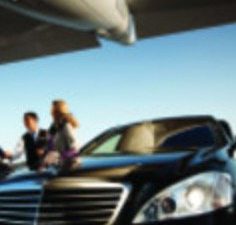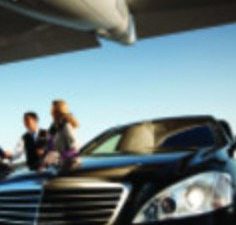How luxury flies
March 31, 2017

For many of us, flying can be a grueling experience. Long queues, unfriendly security personnel and dwindling seat room are all culprits. Since the majority of airline profit is often derived from a small subset of business travelers, it makes sense for them to invest mightily in the premium product.
In his new book SOAR: How the World’s Best Airline Brands Delight Customers and Inspire Employees, author Shashank Nigam explains the power behind an airline’s identity and perception, especially how an investment in their product and brand can actually make them more profitable in the long run.
As airlines up the ante on each other, passengers in the pointy end of the plane stand to benefit the most. All of a sudden, going to the airport doesn’t seem so bad anymore.
It Begins Before Liftoff
Fanciful travel starts even before getting to the airport thanks to airlines like Emirates, Etihad and Virgin Atlantic, all of which offer luxury VIP transfers from within a specific radius of the airport for business class passengers. Once at the airport, staffers with trolleys rush to the car to collect bags and usher guests to a sit-down check-in.
When it comes to first class travel, the amenities are seemingly unlimited. Lufthansa, for example, offers a dedicated first class terminal in Frankfurt designed to pamper with private passport control, on-demand meal service and luxury lounging spaces that include perks like cigar bars or bubble baths (complete with rubber ducky). These days, it’s hard not to lose a little bit of dignity with hands in the air and legs akimbo at US security checkpoints. But at Lufthansa’s first class terminal, there’s private security, and the staff even helps you put your bags through.
Once past security, premium passengers at most airports are finding more to enjoy. For instance United is really stepping up with the introduction of its Polaris premium cabin product which begins at the Polaris lounge (one in Chicago O’Hare is open with more coming to its hub airports). It is arguably the best business class lounge of the major North American carriers with on-demand dining, shower suites, relaxation areas with pillows and blankets, and even storage cabinets for the preferred wine bottles of frequent fliers. It is only accessible to Polaris travelers or Star Alliance premium passengers (meaning it is less crowded).
Abroad, spa treatments are among the perks for business and first class fliers. Air France offers Clarins treatments in its Paris lounges; British Airways partners with Elemis at Heathrow; and Turkish Airlines offers on-the-spot back rubs in its extravagant, duplex lounge. Thai Airways offers its first class passengers an hour-long massage with shorter treatments for business class fliers. Virgin Atlantic offers massage and beauty treatments, even salon services, in many of its lounges. (In the past, Virgin even offered inflight massage and beauty treatments.) Etihad offers free treatments to all premium travelers; Qantas offers free spa perks to first class fliers from Sydney.
Fancy some shuteye before a flight? Swiss International, Turkish Airlines, and Malaysia Airlines all have private napping rooms. Feeling peckish now so that you can sleep from the moment you board the plane? British Airways, Cathay Pacific, United, Virgin Atlantic, and (soon) American all offer a la carte, on-demand dining in many of their lounges.
Fresh air is not unheard of for travelers visiting Delta’s Sky Clubs in Atlanta or JFK or the new Swiss International lounge in Zurich where outdoor terraces put guests front and center to the tarmac’s action. Back inside, Turkish Airlines lounge guests in Istanbul can watch movies in a cinema with reclining seats, use a golf simulator, or play a game of billiards. In Finnair’s Helsinki lounge, travelers can sweat out travel stress in a Finnish sauna.
Cathay Pacific offers noodle bars at many of its lounges. So popular are some of its dishes (the dan dan noodles are a guaranteed win) that travelers arrive at the airport early enough to get their fill. Cathay also introduced the world’s first airport lounge Chinese teahouse; guests can sip from a menu with dozens of varieties.
Air New Zealand’s Auckland lounge has a clever tool that allows people to place an order for specialty coffee without waiting in line; it will be ready and waiting a few minutes after ordering.
Tasty Treat at 35,000 Feet
Inflight, the pampering is better than ever. Topping the list of airline’s on-board one-upsmanship are the menus.
Partnerships with luxury hotel brands and big-name chefs are a common way for airlines to up the ante on inflight dining. Both British Airways and Cathay Pacific have worked with Mandarin Oriental Hotel Group to craft many of its menus. Air France brought on Alain Ducasse to design some of its lounge fare, and Qantas works closely with Neil Perry of Rockpool in Sydney.
Singapore has a cadre of popular dining rooms from around the world including Georges Blanc of Vonnas in France and Alfred Portale of New York City’s Gotham. Frequent Singapore fliers swear by its Book the Cook offer that allows you to select from dozens of menu options in advance of your flight. Air France and Thai Airways offer similar services in addition to the traditional onboard fare.
Airlines are proud to show off their home cuisine, even if taking fliers away from home base. For example, Ethiopian Airlines offers an injera service where the traditional Ethiopian dish is made to order from the cart. Finnair serves inventive Nordic cuisine on its long-haul flights in partnership with Michelin-acclaimed chefs like Sasu Laukkonen of Chef & Sommelier restaurant in Helsinki. Ever had reindeer entrecote on a plane? If not, fly Finnair.
If the menus aren’t from a famous chef’s restaurant, perhaps the chef is on the plane. Austrian and Turkish both have chefs onboard the aircraft, in full culinary regalia, to properly plate and present meals as if it were a restaurant on terra firma.
EVA Air of Taiwan operates its business class as a first class cabin with perks like Rimowa amenity kits, on-demand dining, and Krug champagne. Thai pops the cork on Dom Perignon in first class while Singapore offers a choice between Dom or Krug in first class.
Aboard Emirates, Qatar or Virgin Atlantic, fliers can get together at the inflight bar where bartenders shake and stir cocktails.
All Good Things Must End
When it’s time for landing, some airlines offer lovely parting gifts. The traditional Dutch houses offered from KLM are among the most revered by frequent fliers. In fact, there’s even an app where travelers can tick off each of the 100 varieties of the genever-filled ceramic house they have in their collection.
Brussels Airlines offers business class passengers a large box of Belgian chocolates to take home and share with friends. JetBlue offers its premium Mint cabin fliers men’s or women’s Birch Box packages filled with travel products.
Lufthansa, Swiss, and Thai first class fliers are often escorted to immigration by a personal assistant upon landing. Travelers with tight connections who are big spenders with American, Delta or United will get taken from the door of the plane to the tarmac for a luxury transfer to their next flight. Who needs to traipse through the terminal building anyway?
Delta has been known to send its best customers bottles of Dom Perignon for the holidays. The airline even has a dedicated team that monitors traveler itineraries to personally handle any flight irregularities or disruptions.
As Nigam explains, these airlines may vary in the degree to which they will go to impress premium travelers, but they all share one thing in common: Creativity. By designing perks that help them to stand out from the crowd, airlines can grow customer loyalty while making flying a bit more palatable.
By Ramsey Qubein




